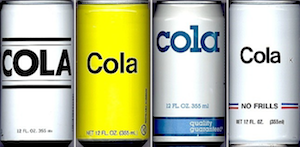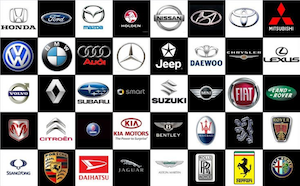The Value Of A Brand

A key element of differentiating from the competition, a powerful brand can draw loyalty from satisfied customers and allow a company to charge a higher price relative to its competitors.
Consumers regularly pay more for branded products as compared to store brands, and they will pay even more for a premium brand as compared to a mass-market brand.
A brand is often identified by a trademark or tradename - a recognizable logo that identifies the product and/or manufacturer.
The Value of a Brand
A company is made up of both tangible and intangible assets. Tangible assets include things like machinery, buildings and land, as well as inventory. Intangible assets are non-physical in nature.
A brand or trademark is an intellectual property asset recognized on a company’s balance sheet as an intangible asset separate from goodwill.
Here are a number of reasons why the value of a brand matters:
- Transactional purposes. A buyer may want an independent valuation of a trademark or a lender may require the valuation of a trademark before it can be pledged as collateral for a loan.
- Financial accounting purposes. Financial accounting requirements come into play when a trademark is acquired in a business combination.
- Tax compliance purposes. Establishing the tax basis in transactions involving the sale or transfer of trademarks.
Valuing The Brand
In previous articles I’ve discussed two valuation techniques - an Income-based valuation method and a Market-based valuation method. For more on these valuation methods see In The Shark Tank It’s All About Valuation.

The valuation of a brand often involves the use of a hybrid of both the Income and Market methods, known as the Relief from Royalty method.
The idea here is that if the company didn’t own the trademark, they’d have to pay a royalty fee for the right to license the trademark. By actually owning the brand, the company is relieved from having to pay such a royalty fee. Thus, the name, ‘Relief from Royalty’.
Like most things in valuation, the valuation of a brand is a forward-looking exercise, where the value of the asset today is equal to the present value of the asset’s cash flows in the future. In the case of a brand, the ‘cash flows’ are based on the royalty fees as a percentage of sales.
‘Relief from Royalty’ calculations are based on what the company would to pay if it didn’t own the brand. This is where the elements of a Market-based method come into play.
The appropriate royalty fee is derived from researching comparable brand/product licensing deals and benchmarking the brand in question relative to these market-based transactions.
Applying the appropriate royalty rate to the estimated sales over the expected life of the brand results in the royalty fees that are avoided by owning the brand.
The avoided royalty payments into the future are then present valued at an appropriate risk rate and converted into today’s dollars.
The key takeaways here are:
- The better-known brands will command a higher royalty rate, and a higher royalty rate results in a higher value of the brand.
- The better-known brands will be considered to be of a lower-risk, and a lower risk rate results in a higher value of the brand.
So, whether you’re wondering what the value of your company’s brand is or you’re just contemplating a bottle of generic ketchup when you’re at the grocery store, you now have an idea of how to go about valuing the branded alternatives.
Identify your path to CFO success by taking our CFO Readiness Assessmentᵀᴹ.
Become a Member today and get 30% off on-demand courses and tools!
For the most up to date and relevant accounting, finance, treasury and leadership headlines all in one place subscribe to The Balanced Digest.
Follow us on Linkedin!
